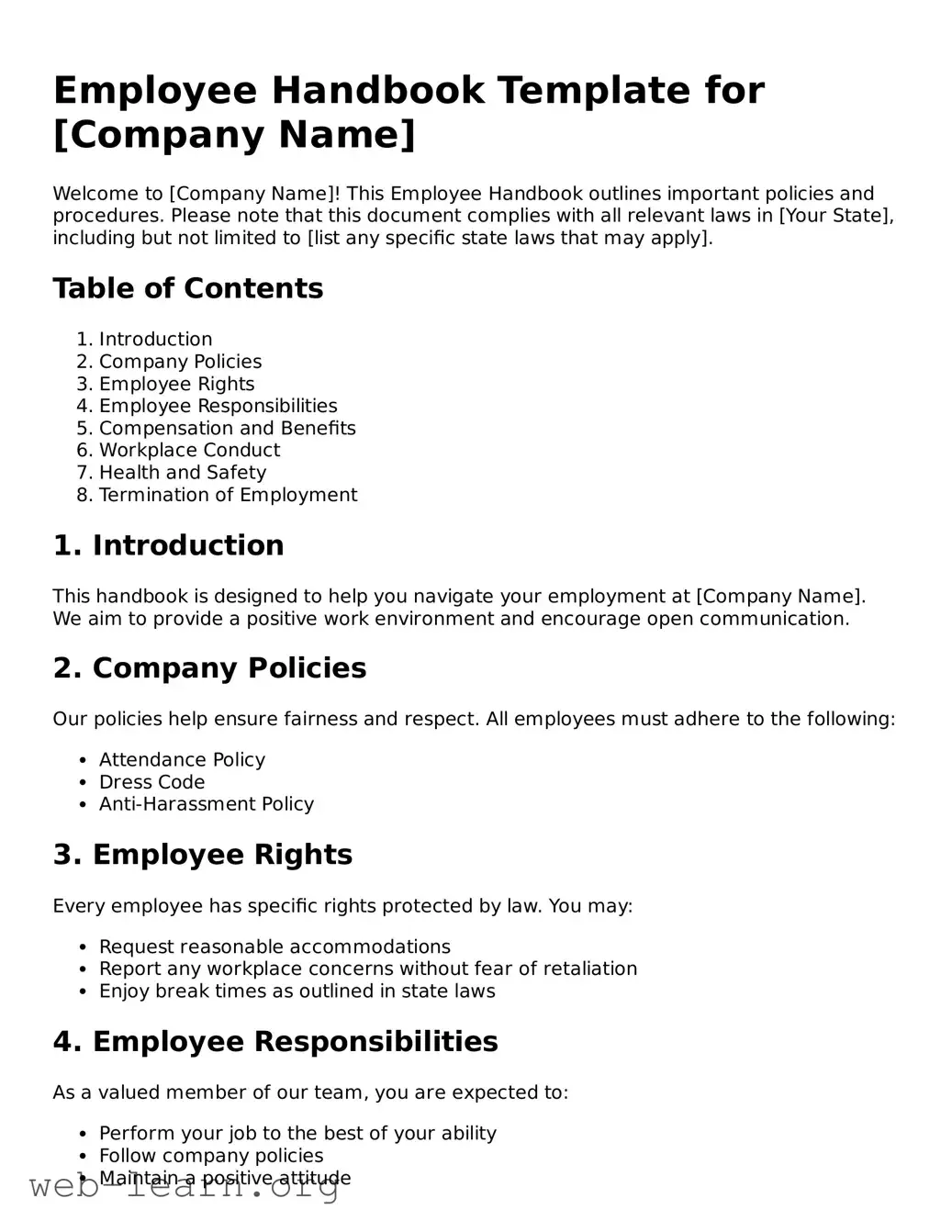Employee Handbook Template for [Company Name]
Welcome to [Company Name]! This Employee Handbook outlines important policies and procedures. Please note that this document complies with all relevant laws in [Your State], including but not limited to [list any specific state laws that may apply].
Table of Contents
- Introduction
- Company Policies
- Employee Rights
- Employee Responsibilities
- Compensation and Benefits
- Workplace Conduct
- Health and Safety
- Termination of Employment
1. Introduction
This handbook is designed to help you navigate your employment at [Company Name]. We aim to provide a positive work environment and encourage open communication.
2. Company Policies
Our policies help ensure fairness and respect. All employees must adhere to the following:
- Attendance Policy
- Dress Code
- Anti-Harassment Policy
3. Employee Rights
Every employee has specific rights protected by law. You may:
- Request reasonable accommodations
- Report any workplace concerns without fear of retaliation
- Enjoy break times as outlined in state laws
4. Employee Responsibilities
As a valued member of our team, you are expected to:
- Perform your job to the best of your ability
- Follow company policies
- Maintain a positive attitude
5. Compensation and Benefits
[Company Name] offers a competitive compensation package. Employees are eligible for the following:
- Health insurance options
- Paid time off (PTO)
- Retirement savings plan
6. Workplace Conduct
We value a respectful and inclusive workplace. All employees should adhere to these conduct standards:
- Respect your colleagues
- Act professionally
- Communicate effectively
7. Health and Safety
Your health and safety are a priority. Follow these guidelines to help ensure a safe work environment:
- Report any unsafe conditions
- Participate in safety training sessions
- Follow all health protocols
8. Termination of Employment
Employees may voluntarily resign or be terminated for cause. A notice period is appreciated, but not always required. Reasons for termination may include:
- Poor performance
- Violation of company policy
- Attendance issues
For any questions or clarifications regarding this handbook, please reach out to your supervisor or the HR department. Welcome aboard!
